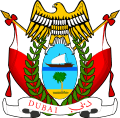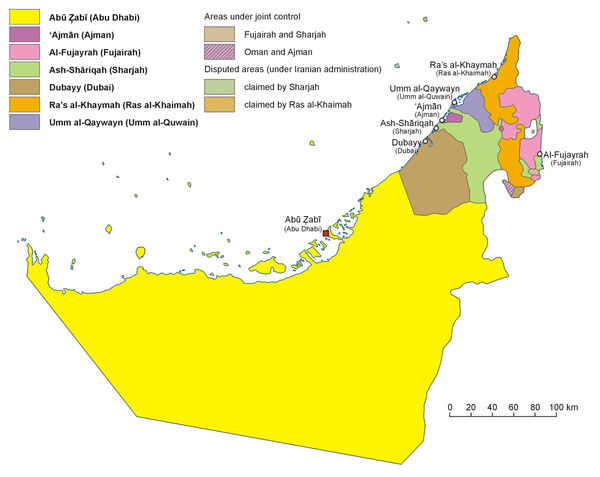Emirate of Dubai
| Emirate of Dubai دبيّ Imārat Dubayy | |||
|---|---|---|---|
| Emirate | |||
| |||
|
| |||
| Coordinates: 23°30′N 54°30′E / 23.5°N 54.5°ECoordinates: 23°30′N 54°30′E / 23.5°N 54.5°E | |||
| Country |
| ||
| Emirate |
| ||
| Independence from UK | 2 December 1971 | ||
| Seat | Dubai | ||
| Subdivisions | |||
| Government | |||
| • Type | Constitutional monarchy | ||
| • Emir | Mohammed bin Rashid Al Maktoum | ||
| Area | |||
| • Total | 4,114 km2 (1,588 sq mi) | ||
| Time zone | UAE standard time (UTC+4) | ||
The Emirate of Dubai (Arabic: إمارة أبو ظبي Imārat Dubayy), is one of seven states that constitute the United Arab Emirates (UAE). It is the second largest emirate by area.
Dubai is the capital city of the emirate, after which it is named.
Ruler of the emirate is HRH Mohammed bin Rashid Al Maktoum.
Two crucial events in the early 1970s spurred the economic development of the emirate. One was reaching independence and the establishment of the federation in 1971. The other was the oil crisis in 1973, which saw a large rise in oil revenues and helped the state finances. The emirate has continuously contributed to the GDP of the United Arab Emirates. The economy has since tried to move away from the traditional oil-based commodities to branch out into services such as transport and logistics. Dubai's tourism contributes a large part of its Gross Domestic Product (GDP) estimates.
External links
 Dubai travel guide from Wikivoyage
Dubai travel guide from Wikivoyage- www.Dubai.ae – Dubai Government official website
 |
Persian Gulf |  | ||
| |
Sharjah | |||
| ||||
| | ||||
| Abu Dhabi |
| ||||||||


